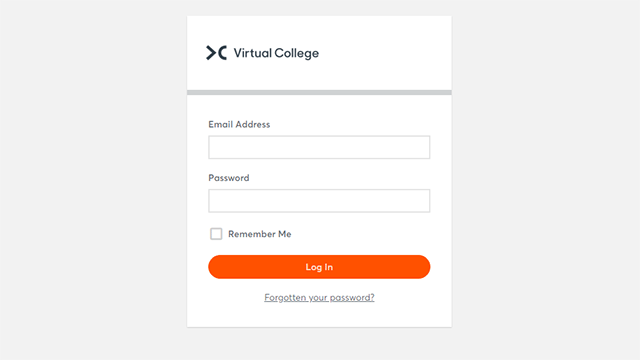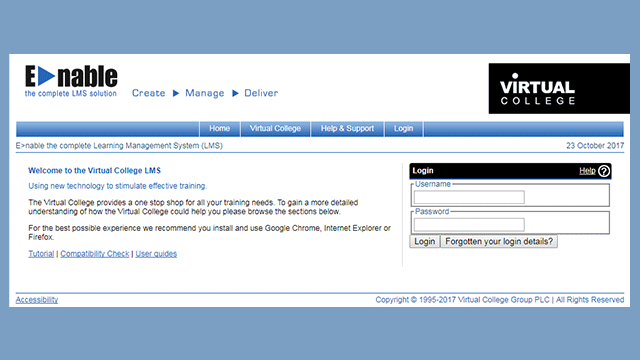Manual Handling in the Workplace Training
This Manual Handling in the workplace training is designed for anyone who needs to lift heavy items as part of their role, as well as the supervisors and managers of these workers. This manual handling course covers the Manual Handling Operations Regulations 1992 and outlines manual handling risks, and how to educate staff about them in order to protect their health and safety at work.
This course was reviewed and updated in February 2025
Course Overview
Format
- Intermediate
- 30 to 45 Minutes
- Online Study
- Self-Printed Certificate
Accreditation
- 1 CPD Hours
- CPD Certified
- RoSPA Assured
Course description
This engaging online Manual Handling training gives you practical knowledge to prevent workplace injuries when handling loads. As one of our essential health and safety courses, it delivers critical skills in just 30-45 minutes.
Manual handling injuries affect half a million UK workers annually, with back injuries being the leading cause of workplace absences. By law, employers must protect their workforce—and this training helps you meet those legal obligations while reducing costly downtime.
Learn proper lifting techniques, understand the Manual Handling Operations Regulations, and discover how to identify and minimise risks in your specific work environment. Whether you're a manager responsible for team safety or an employee who regularly lifts items, this course provides the tools you need to create a safer workplace.
Who should take this Manual Handling in the Workplace training and why?
This course is primarily aimed at anyone who may need to lift items as part of their duties, however, the information is applicable to any workplace environment.
Our Manual Handling in the Workplace course helps employers meet their legal health and safety obligations, educating them about how to protect their workforce, and subsequently their wider business.
This manual handling training course is designed for anyone who needs to lift heavy items as part of their role, as well as the supervisors and managers of these workers. This could be delivery drivers, removal contractors, construction workers, retail assistants, office workers, bar staff, chefs, kitchen assistants, maintenance workers, plumbers, labourers, mechanics, builders, decorators, gardeners and landscapers.
What does this Manual Handling course cover?
Our Manual Handling in the Workplace course covers a wide range of topics for anyone needing training on how to lift loads correctly and safely.
| Module | What it includes |
| Introduction and Learning Outcomes | To start the manual handling training course this section explains the learning outcomes of the training and allows you to complete a self-assessment to rate your knowledge of the topic. |
| Understanding Manual Handling Basics | Here we explain what manual handling is, the impacts it has if done incorrectly, the effect it can have on your body and the different types of manual handling accidents. The section finishes with a knowledge check to ensure you have fully understood the training so far. |
| Mindful Approaches to Manual Handling | This part reiterates the importance of manual handling, explains how you can you keep yourself safe whilst lifting and how you can prevent an accident. This section also has three scenario based audio clips which can also be read via the transcripts provided. |
| Hazards and Risks | There are many risks and hazards associated with manual handling and this part of the course explains why you should avoid manual handling where possible, it defines the TILEO abbreviation, how to ask the right questions and provides five manual handling scenarios. |
| The 'SMART' Lifting Techniques | Manual handling should never be rusihed into and the 'SMART' techniques provides practical steps to take in the workplace. |
After completing this e-learning course, learners will be able to:
- Understand why you need to know how to move and handle objects correctly
- Know key manual handling regulations
- Understand the responsibilities of employees and employers with regard to manual handling
- Know the basic theory of how the spine works, common injuries and how to avoid them
Manual Handling Course for Health & Safety in the Workplace Legislation
The Manual Handling Operations Regulations are the most significant when it comes to this area of safety, sometimes incorrectly referred to as the ‘manual handling act’.
This dedicated piece of legislation is designed to help employers and employees manage, control and ultimately reduce the risk of injuries that might come about from poor manual handling practice.
One of the most important elements of the legislation is that, when it came into force in 1993, it placed a requirement on employers to take action in respect of manual handling and ensured that they had a responsibility to their employees.
Manual Handling Training Certificate
At the end of our Manual Handling in the Workplace course, there is a test to complete, with 17 multiple choice questions. You need to achieve a pass mark of 80%, but you can take the test as many times as is required.
Learners will be able to download a digital manual handling training certificate on completion of the course. This can be printed, and we suggest you keep it for your records. The content of this training has been independently certified as conforming to universally accepted Continuous Professional Development (CPD) guidelines.
How can I improve my manual handling knowledge?
Increase your understanding of manual handling with our range of articles including 'TILE in Manual Handling', 'Why is Manual Handling Training so Important' and 'Manual Handling Risks and Procedures'.
We also offer a wide range of related online courses including Manual Handling and First Aid Training Package, First Aid, Manual Handling and Personal Safety for Lone Workers Training Package and Health and Safety at Work Training Package.
You will learn
- An explanation of what manual handling is, types of manual handling, why it is important
- Discussion of the consequences of manual handling accidents and who is responsible for what
- Identifying ways to avoid manual handling and how to prevent accidents with a risk assessment
- Describing an easy and practical method to lifting objects in a way that will prevent injuries
Who is it for?
Roles including:
- This course is for anyone who needs to lift items as part of their duties or just as-and-when needed
- Delivery Drivers
- Removal Contractors
- Construction Workers
- Retail Assistants
- Office Workers
- Bar Staff
- Chefs
- Kitchen Assistants
- Maintenance Workers
- Plumbers
- Labourers
- Mechanics
- Builders
- Decorators
- Gardeners
- Landscapers
Manual Handling in the Workplace FAQs
- How long is Manual Handling in the Workplace valid for?
- Is it a legal requirement to complete Manual Handling Training?
- What will Manual Handling in the Workplace cover?
- Can manual handling training be done online?
- Does manual handling training expire?
- How long is manual handling training?
- Is manual handling training a legal requirement in the United Kingdom?





























